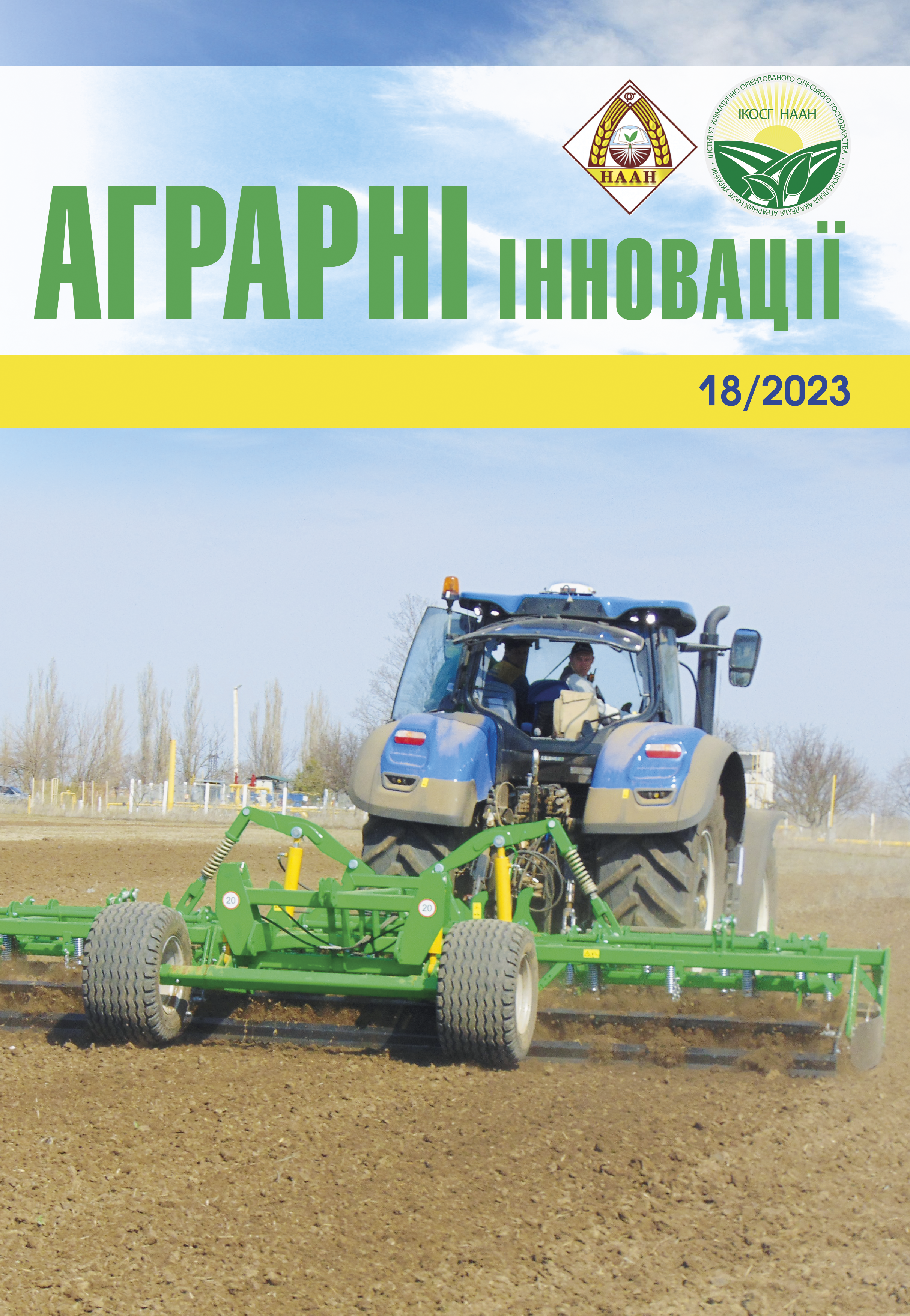THE INFLUENCE OF PLANT DENSITY ON CUCUMBER YIELD IN FILM GREENHOUSES
Abstract
The priority direction at the current stage of development of vegetable growing is obtaining high-quality, ecologically safe products in combination with the development and implementation of new agrotechnical methods of cultivation. Moreover, promising are those that can significantly expand the range of cultivated crops, the ultimate goal of which is to diversify the diet of the population. Currently, the search for new highly effective and ecologically safe technologies for growing vegetable plants is promising, and biological methods of influencing the plant organism are gaining great importance. One of these methods is the use of rootstock. The objective The purpose of the work was to determine the optimal density of cucumber cultivation on the rootstock of dubious tladianta in the conditions of the 4th light zone of Ukraine. Methods. Experiments were conducted in unheated film greenhouses during the early spring crop rotation. Results. Cultivation of grafted cucumber plants in the conditions of film greenhouses without heating of the IV light zone of Ukraine is a priority task, since such plants provide strong vegetative growth and development, high repairability, uniform yield, and are also distinguished by the ease of their formation. At the same time, parthenocarpic cucumber hybrids are not suitable for film greenhouses without heating, where it is necessary to obtain products in a short period of vegetation. For film greenhouses in the conditions of the IV light zone of Ukraine, precocious parthenocarpic hybrids are needed, which have a high frequency of laying inflorescences, are suitable for cultivation at unfavorable temperatures and ensure rational use of the volume of the greenhouse. In addition, such plants are better adapted to conditions of insufficient lighting. For these reasons, they can be planted in the early spring rotation of unheated film greenhouses in late March early April. The best solution for obtaining cucumber hybrids resistant to unfavorable growing conditions is to use different methods of grafting plants. According to the results of research into the conditions of film greenhouses, the possibility of using Tladianta as a rootstock in the cultivation of parthenocarpic cucumber hybrids is substantiated. Conclusions. As a result of experimental studies, it was established that in order to obtain early production in the conditions of film greenhouses without heating of the IV light zone of Ukraine and increase the total yield of parthenocarpic cucumber hybrids to 19,4 kg/m2 with the optimal density of cucumber plants – 3,0 plants/ m2 can be achieved by grafting the hybrid Nibori (KS-90) F1 by the method of splicing with rootstock Tladianta dubious.
References
2. Приліпка О.В. Агротехнологічні та організаційні засади функціонування підприємств закритого ґрунту [монографія]. Київ: Центр учбової літератури, 2016. 384 с.
3. Бондаренко С.В., Станкевич С.В. Поширеність і шкідливість основних захворювань огірків та імунітет культури. Таврійський науковий вісник: Науковий журнал. Сільськогосподарські науки. Вип. 118. Видавничий дім «Гельветика», 2021. С. 21–38.
4. Корнієнко С.І. Удобрення овочевих та баштанних культур: монографія/ С.І. Корнієнко, В.Ю. Гончаренко, Л.П. Ходеєва та ін. Вінниця: ТОВ «Нілан ЛТД», 2014. 370 с.
5. Комплексна система заходів захисту огірка від шкідників, хвороб і бур’янів (науково-практичні рекомендації). Харків: Плеяда, 2012. 24 с.
6. Яровий Г.І., Сєвідов В. П. Особливості вирощування огірків у захищеному ґрунті. Вісник Харківського національного аграрного університету ім. В.В. Докучаєва. Сер.: Рослинництво, селекція і насінництво, плодоовочівництво і зберігання. 2016. № 1. С. 172–177.
7. Методика дослідної справи в овочівництві і баштанництві; за ред. Г.Л. Бондаренка. Харків: Основа, 2001. 369 с.
8. ДСТУ 6015: 2008 «Насіння огірка, кабачка, патисона. Технологія вирощування. Загальні вимоги». Київ: Держспоживстандарт України, 2009. 15 с.
9. Ковальов М.М., Звєздун О.М., Михайлова Дарія Порівняння ефективності вирощування розсади Thladiantha Dubia в ґрунтовому середовищі і гідропонних системах. Науковий журнал «Водні біоресурси та аквакультура» Вип. 2. Видавничий дім «Гельветика», 2020. С. 20–28.
10. Ковальов М. М. Вирощування огірка Козіма F1 на різних типах субстратів у гідропонних купольних теплицях. Таврійський науковий вісник: Науковий журнал. Сільськогосподарські науки. Вип. 117 Видавничий дім «Гельветика», 2021. С. 80–89.






